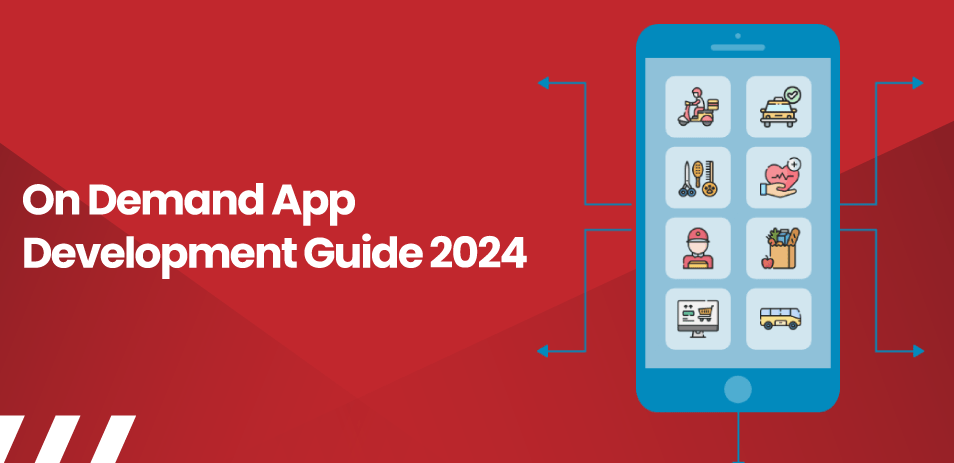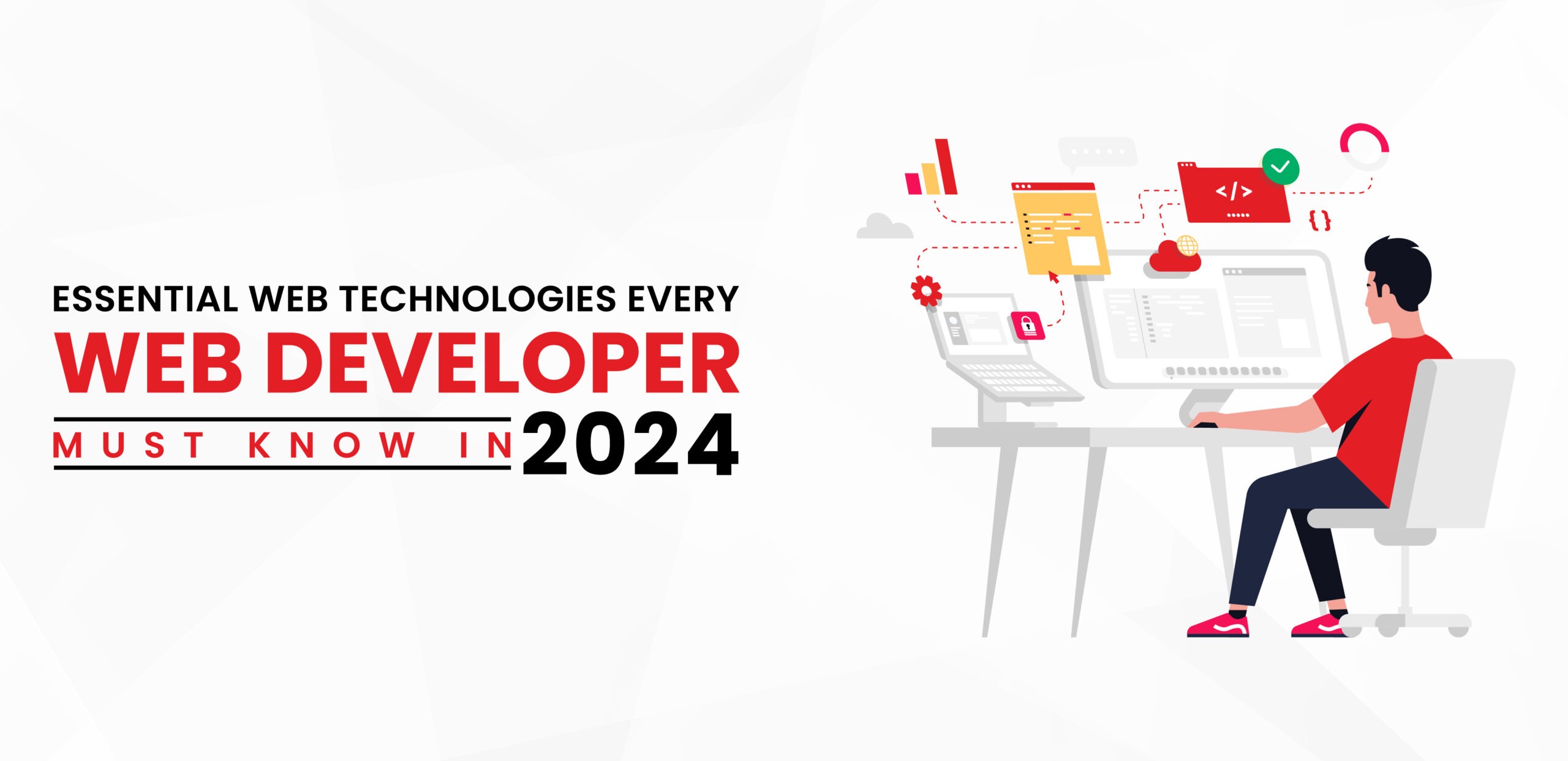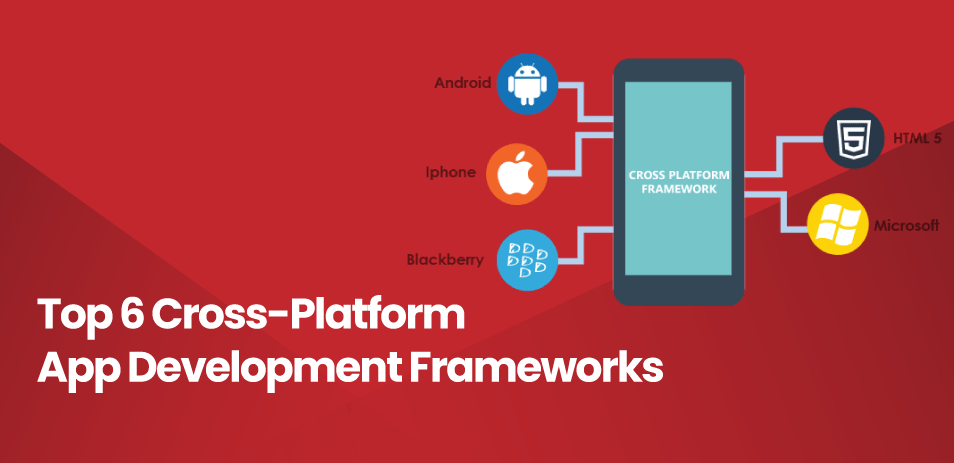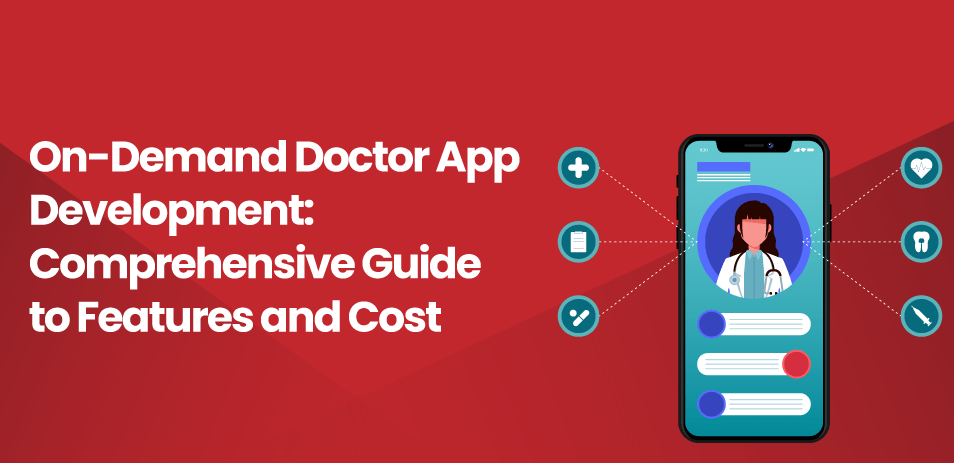In 2024, on-demand applications have revolutionized how we access services and products. From ride-hailing to food delivery, on-demand apps have seamlessly integrated convenience into our daily lives. As we step into 2024, the landscape of on demand app development continues to evolve rapidly, presenting both opportunities and challenges for businesses looking to capitalize on this trend. In this comprehensive guide, we’ll explore the key components, trends, and strategies shaping on demand app development in 2024, providing you with actionable insights to build cutting-edge digital solutions.
What is On Demand App Development?
On demand mobile app development involves the creation of mobile or web-based platforms that connect service providers with consumers in real time. These applications leverage technology to streamline processes, optimize resource allocation, and enhance user experiences. Whether it’s transportation, food delivery, healthcare, or household services, on-demand apps cater to diverse needs, offering convenience, accessibility, and efficiency.
Types of On-Demand Apps
Transportation and Ride-Hailing
Transportation and ride-hailing apps revolutionize commuting by offering convenient and on-demand access to taxis, ridesharing services, and car rentals. Users can book rides instantly, track their drivers in real time, and pay seamlessly through the app. Travel app development have transformed urban mobility, providing reliable transportation options, reducing congestion, and improving accessibility for commuters worldwide.
Food Delivery
The revenue in the Online Food Delivery market is forecasted to reach US$1.22tn in 2024. Food delivery apps have reshaped the dining experience by allowing users to order meals from their favorite restaurants and have them delivered to their doorstep. With a wide selection of cuisines and eateries to choose from, users can satisfy their cravings conveniently and enjoy restaurant-quality food in the comfort of their homes. On demand delivery app development offer various delivery options, including contactless delivery and real-time tracking, ensuring a hassle-free and satisfying dining experience.
Real Estate
Real estate apps simplify the process of buying, selling, renting, or leasing properties by providing users with comprehensive listings, virtual tours, and personalized recommendations. Users can browse through a diverse range of properties, view high-resolution photos, and access detailed property information, such as pricing, amenities, and location. Real estate app development facilitate seamless communication between buyers, sellers, agents, and landlords, enabling efficient transactions and empowering users to make informed decisions about their real estate investments.
Sports App
Sports apps cater to enthusiasts by providing real-time updates, news, scores, and highlights of various sports events and leagues. Users can personalize their experience by selecting their favorite teams, players, and leagues, receiving notifications for live matches, and accessing comprehensive statistics and analysis. These apps foster community engagement through features like social sharing, forums, and fantasy sports leagues, allowing users to connect with fellow fans, discuss matches, and compete with friends. Sports app development promote active lifestyles, entertainment, and camaraderie among sports enthusiasts worldwide.
Healthcare and Telemedicine
Healthcare apps development revolutionize healthcare delivery by offering on-demand access to medical services, consultations, and prescriptions through digital platforms. Users can consult licensed healthcare professionals via video calls, chat, or phone, receive diagnoses, medications, and treatment plans remotely, and access medical records securely. These apps provide convenient alternatives to traditional healthcare settings, particularly for non-emergency issues, chronic conditions, or remote areas with limited access to healthcare facilities. Healthcare apps promote preventive care, patient empowerment, and improved healthcare outcomes through accessible and efficient digital solutions.
Beauty and Wellness
Beauty and wellness app development offer on-demand access to a wide range of services, including haircare, skincare, massages, and fitness training, delivered directly to users’ homes or preferred locations. Users can book appointments with trained professionals, browse portfolios, read reviews, and choose from various services tailored to their needs and preferences. Beauty and wellness apps promote self-care, relaxation, and personal grooming by providing convenient and personalized experiences that fit into users’ busy lifestyles. These apps empower users to prioritize their well-being and enhance their physical and mental health through accessible and convenient digital solutions.
Ready to bring your app idea to life?
Let’s collaborate and build something amazing together. Contact us now to get started!
Yes Let’s goBenefits of On-demand Apps
- Convenience: Users can access services/products anytime, anywhere.
- Accessibility: Provides access to a wide range of services/products at users’ fingertips.
- Efficiency: Streamlines processes, reducing manual effort and errors.
- Customization: Offers personalized experiences based on user preferences.
- Cost-Effectiveness: Provides competitive pricing, discounts, and promotions.
- Safety and Security: Ensures secure payment options and data protection.
- Flexibility: Allows users to choose from multiple options, giving them greater control.
- Innovation: Drives innovation and disruption in traditional industries.
Key Components of On Demand App Development
On-demand applications have become an integral part of our daily lives, providing convenient access to a wide range of services and products. Behind the seamless user experience lies a complex system of interconnected components that work together to deliver value to both users and service providers. Understanding these key components is essential for building robust on-demand applications that meet the evolving needs of today’s digital consumers. Let’s delve into each element in detail:
User Interface (UI) and User Experience (UX) Design
User Interface (UI) and User Experience (UX) design are fundamental aspects of any on-demand application. The UI encompasses the visual elements and layout of the app, while UX focuses on the overall user journey and interactions.
- Intuitive Design: The UI should be intuitive and easy to navigate, allowing users to access services and features effortlessly. Clear navigation menus, intuitive icons, and consistent design elements contribute to a positive user experience.
- Visual Appeal: Visually appealing design elements, such as color schemes, typography, and imagery, enhance the overall aesthetic of the app and capture users’ attention.
- Personalization: Tailoring the user experience based on individual preferences and behavior improves engagement and encourages repeat usage. Personalized recommendations, customized content, and user-specific settings contribute to a more engaging experience.
- Responsiveness: With the proliferation of mobile devices, ensuring responsive design across various screen sizes and resolutions is crucial. Adaptive design principles enable the app to adapt seamlessly to different devices, providing a consistent user experience.
Backend Development
While the UI/UX design focuses on the front-end aspects of the application, the back-end development is responsible for the server-side logic, database management, and business logic implementation.
- Server Architecture: Choosing the right server architecture, whether it’s monolithic, microservices, or serverless, depends on the scalability and complexity requirements of the application. Scalable architectures enable the application to handle increasing user loads and support future growth.
- Database Management: Efficient database management is essential for storing and retrieving user data, service listings, transaction history, and other relevant information. Utilizing databases such as SQL or NoSQL databases depends on the specific needs of the application.
- APIs and Integrations: Integrating with third-party services, payment gateways, mapping APIs, and other external systems enhances the functionality and capabilities of the application. Well-documented APIs facilitate seamless communication between different systems and ensure interoperability.
- Security Measures: Implementing robust security measures, including encryption, authentication, and authorization mechanisms, protects sensitive user data and prevents unauthorized access. Regular security audits and compliance with industry standards help mitigate security risks and ensure regulatory compliance.
Geolocation and Mapping Services
Geolocation and mapping services play a crucial role in on-demand applications, especially those involving location-based services such as ride-hailing, food delivery, and home services.
- Real-time Tracking: Integrating geolocation features allows users to track the location of service providers in real time, providing visibility into estimated arrival times and route progress. GPS-based tracking ensures accuracy and reliability.
- Route Optimization: Mapping services enable route optimization algorithms to calculate the most efficient routes for service providers, minimizing travel time and fuel consumption. Factors such as traffic conditions, distance, and user preferences are taken into account to optimize routes.
- Geofencing: Geofencing capabilities allow businesses to define virtual boundaries and trigger notifications or actions when users or service providers enter or exit specific geographic areas. Geofencing is commonly used for location-based marketing, safety alerts, and proximity-based services.
Payment Gateway Integration:
Seamless and secure payment processing is essential for facilitating transactions within the on-demand application, ensuring a frictionless experience for users and service providers.
- Multiple Payment Options: Integrating multiple payment gateways, including credit/debit cards, digital wallets, and mobile payment platforms, accommodates diverse user preferences and enhances convenience. Supporting various currencies and payment methods expands the reach of the application to a global audience.
- Secure Transactions: Implementing encryption protocols, PCI DSS compliance, and tokenization mechanisms protects sensitive payment information and reduces the risk of fraud or data breaches. Secure Socket Layer (SSL) encryption ensures data confidentiality during transmission.
- Seamless Checkout Experience: Streamlining the checkout process with one-click payments, saved payment methods, and guest checkout options reduce friction and enhance conversion rates. Providing real-time payment confirmation and receipts instills confidence in users and improves trust in the platform.
Ratings and Reviews System
A transparent ratings and reviews system fosters trust and accountability within the on-demand application, enabling users to make informed decisions and providing valuable feedback to service providers.
- User Feedback: Allowing users to rate their experiences and leave reviews after completing transactions provides valuable insights into service quality, reliability, and customer satisfaction. Ratings and reviews help other users make informed decisions and contribute to the reputation of service providers.
- Service Provider Ratings: Implementing a rating system for service providers based on factors such as performance, punctuality, and professionalism encourages accountability and incentivizes high-quality service delivery. Top-rated providers may receive preferential treatment or rewards within the platform.
- Moderation and Transparency: Implementing moderation mechanisms to filter out fake reviews, spam, or inappropriate content ensures the integrity and credibility of the ratings and reviews system. Transparent guidelines and disclosure policies promote trust and fairness among users and service providers.
Trends Shaping On Demand App Development in 2024
The on-demand economy has undergone significant transformations in recent years, driven by advancements in technology, shifting consumer preferences, and evolving market dynamics. As we step into 2024, several emerging trends are shaping the landscape of on-demand app development, offering new opportunities for innovation, disruption, and growth. Let’s explore the key trends shaping on demand app development in 2024:
Artificial Intelligence (AI) and Machine Learning (ML) Integration
AI and ML technologies are revolutionizing the on-demand economy, enabling personalized experiences, predictive analytics, and automation across various sectors. In 2024, we can expect to see increased integration of AI-powered algorithms into on-demand applications, offering enhanced capabilities such as:
- Personalized Recommendations: AI algorithms analyze user preferences, behavior, and historical data to deliver personalized recommendations for services, products, or content. Whether it’s suggesting relevant services based on past interactions or recommending tailored promotions, personalized recommendations enhance user engagement and satisfaction.
- Predictive Analytics: ML models analyze large datasets to predict user behavior, demand patterns, and market trends, enabling businesses to anticipate customer needs and optimize resource allocation. Predictive analytics can be applied to dynamic pricing, demand forecasting, and inventory management, improving efficiency and profitability.
- Intelligent Chatbots: AI-powered chatbots provide instant assistance, answer user queries, and automate customer support interactions within on-demand applications. Natural Language Processing (NLP) capabilities enable chatbots to understand and respond to user inquiries, resolve issues, and facilitate transactions in real time, enhancing user experiences and reducing response times.
Internet of Things (IoT) Integration
The Internet of Things (IoT) is transforming the on-demand economy by connecting physical devices, sensors, and objects to the Internet, enabling data-driven insights, automation, and remote monitoring. In 2024, we can expect to see increased integration of IoT technologies into on-demand applications, offering new possibilities such as:
- Smart Logistics and Fleet Management: IoT devices, such as GPS trackers, telematics sensors, and vehicle diagnostics, enable real-time tracking, monitoring, and optimization of fleets in transportation and logistics-based on-demand services. From route optimization to predictive maintenance, IoT-driven solutions enhance efficiency, safety, and cost-effectiveness.
- Connected Home Services: IoT-enabled devices, such as smart locks, thermostats, and appliances, facilitate seamless integration with on-demand applications for home services, maintenance, and automation. Users can remotely control and monitor their smart home devices, schedule appointments with service providers, and receive alerts or notifications, enhancing convenience and security.
- Wearable Technology: Wearable devices, such as fitness trackers, smartwatches, and health monitors, offer new opportunities for on-demand healthcare and wellness services. Integrating with wearable technology enables personalized health coaching, remote patient monitoring, and real-time feedback, empowering users to make informed decisions about their health and well-being.
Blockchain Technology for Security and Transparency
Blockchain technology is disrupting the on-demand economy by offering decentralized, transparent, and secure solutions for transactions, identity management, and data sharing. In 2024, we can expect to see increased adoption of blockchain technology in on-demand applications, providing benefits such as:
- Secure Transactions: Blockchain-based solutions offer secure, tamper-proof transactions, reducing the risk of fraud, identity theft, and data breaches. By leveraging cryptographic algorithms and distributed ledger technology, blockchain ensures the integrity and confidentiality of transactions, enhancing trust and confidence among users and service providers.
- Transparent Supply Chain Management: Blockchain enables end-to-end visibility and traceability of goods and services across the supply chain, from production to delivery. Smart contracts automate contract execution, enforce terms and conditions, and facilitate transparent, immutable records of transactions, enhancing accountability and reducing disputes.
- Decentralized Identity Verification: Blockchain-based identity management solutions provide users with control over their digital identities, allowing them to securely share and verify personal information without relying on centralized authorities. Decentralized identity verification enhances privacy, security, and interoperability, enabling seamless onboarding and authentication within on-demand applications.
Augmented Reality (AR) and Virtual Reality (VR) Experiences
AR and VR technologies are reshaping the on-demand economy by offering immersive, interactive experiences that blur the lines between the physical and digital worlds. In 2024, we can expect to see increased adoption of AR and VR technologies in on-demand applications, offering new possibilities such as:
- Enhanced Product Visualization: AR-powered visualizations enable users to preview products, visualize spaces, and make informed purchase decisions within on-demand retail and e-commerce applications. From trying on virtual clothing to visualizing furniture in their homes, AR enhances the shopping experience and reduces returns.
- Virtual Tours and Experiences: VR simulations offer virtual tours, immersive gaming experiences, and interactive content within on-demand travel, entertainment, and education applications. Whether it’s exploring destinations in virtual reality or attending live events remotely, VR enhances engagement and accessibility for users worldwide.
- Training and Simulation: AR and VR technologies are increasingly being used for training, simulation, and skill development within on-demand education, healthcare, and professional services applications. From immersive training simulations to virtual medical procedures, AR and VR offer realistic, hands-on learning experiences that enhance retention and proficiency.
Strategies for Successful On Demand App Development
Building a successful on-demand application requires careful planning, strategic execution, and a deep understanding of market dynamics and user needs. From ideation to launch and beyond, implementing the right strategies can make the difference between success and failure in the competitive landscape of the on-demand economy. Here are key strategies for successful on demand app development:
Market Research and Validation
Before diving into development, conduct thorough market research to identify target demographics, market trends, and competitive landscapes. Understand the needs and pain points of your target audience and validate your app idea through user surveys, focus groups, and competitor analysis.
- Identify Niche Opportunities: Explore niche markets or underserved segments within your industry where your on-demand app can offer unique value propositions or cater to specific needs.
- Analyze Competitor Strategies: Study existing on-demand apps in your target market to understand their features, pricing models, user experiences, and customer feedback. Identify gaps or areas for improvement that you can leverage to differentiate your app.
- Validate Demand: Validate the demand for your on-demand app by conducting pilot tests, MVP (Minimum Viable Product) launches, or pre-launch campaigns to gauge user interest and gather feedback.
Seamless User Onboarding and Engagement
User onboarding and engagement are critical factors that determine the success of your on-demand app. Simplify the registration process and provide incentives for users to sign up. Once onboarded, focus on delivering a seamless and engaging user experience to keep users active and satisfied.
- Streamlined Registration: Minimize friction during the registration process by offering social media login options, email verification, or one-click registration. Provide clear instructions and guidance to help users complete the onboarding process quickly.
- Incentivize User Actions: Offer incentives such as discounts, credits, or rewards for completing profile setups, making first purchases, or referring friends to the platform. Incentives encourage user engagement and promote user retention.
- Gamification Elements: Incorporate gamification elements such as badges, achievements, and progress bars to motivate users and make the user experience more enjoyable. Gamification increases user engagement, encourages repeat usage, and fosters a sense of accomplishment.
Partnering with Reliable Service Providers
The success of your on-demand app relies heavily on the quality and reliability of the services offered. Forge partnerships with reputable service providers who can deliver consistent, high-quality services to your users. Establish clear guidelines, service level agreements (SLAs), and performance metrics to maintain service standards.
- Vet Service Providers: Conduct thorough vetting and background checks on service providers to ensure they meet your quality standards, possess the necessary qualifications, and adhere to industry regulations.
- Provide Training and Support: Offer training programs, workshops, or resources to onboard and educate service providers about your platform’s policies, procedures, and best practices. Provide ongoing support and communication channels to address any issues or concerns.
- Monitor Performance: Continuously monitor the performance of service providers based on key metrics such as customer ratings, completion rates, and response times. Provide feedback and coaching to help service providers improve their performance and maintain service quality.
Continuous Optimization and Innovation
On demand app development is an iterative process that requires continuous optimization and innovation to stay competitive and meet evolving user needs. Monitor user feedback, analytics data, and market trends to identify areas for improvement and innovation.
- Iterate Quickly: Embrace agile development methodologies to iterate quickly, release updates, and address user feedback in a timely manner. Break down development tasks into smaller, manageable sprints to maintain momentum and flexibility.
- A/B Testing: Conduct A/B testing experiments to compare different variations of features, designs, or functionalities and measure their impact on user engagement, conversion rates, and satisfaction. Use data-driven insights to make informed decisions and optimize user experiences.
- Stay Ahead of Trends: Keep abreast of emerging technologies, industry trends, and competitor strategies to anticipate market shifts and user expectations. Experiment with new features, integrations, or monetization models to differentiate your app and stay ahead of the curve.
Excited to embark on your on demand app development journey?
Don’t wait any longer. Reach out to us today, and let’s turn your vision into reality!
Yes Let’s goConclusion
The landscape of on demand app development is characterized by innovation, convenience, and transformative potential, as discussed in this comprehensive guide. From transportation and food delivery to healthcare and beauty services, on-demand apps have revolutionized how we access and experience various products and services in the digital age. By leveraging emerging technologies such as artificial intelligence, blockchain, and augmented reality, businesses can enhance user experiences, streamline operations, and drive competitive advantage in the dynamic on-demand economy of 2024.
The success of on-demand apps hinges on strategic planning, user-centric design, and continuous optimization to meet evolving market demands and user expectations. By conducting thorough market research, fostering seamless user experiences, and forging reliable partnerships with mobile app development company in Dallas, businesses can build robust on-demand applications that deliver value, convenience, and trust to users and service providers alike.
As we look ahead, the on-demand economy shows no signs of slowing down, presenting abundant opportunities for innovation, disruption, and growth across diverse industries. By embracing the trends, strategies, and technologies outlined in this guide, businesses can position themselves for success in the ever-evolving landscape of on demand app development, catering to the needs and preferences of today’s digital consumers while shaping the future of on-demand services in the years to come.








